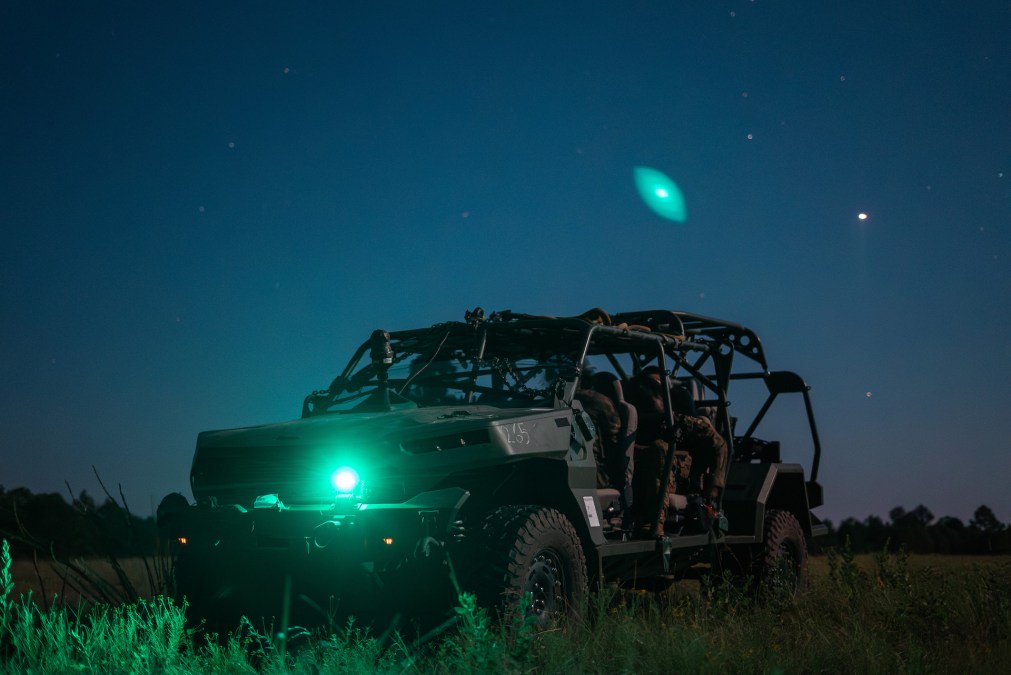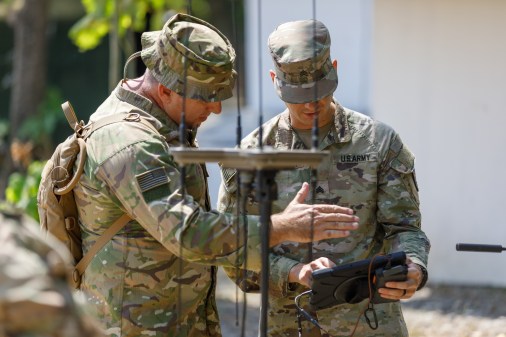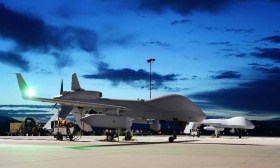General Dynamics integrates EW capability into Infantry Squad Vehicle

General Dynamics Mission Systems has integrated its electronic warfare kit into the Infantry Squad Vehicle, the first such capability to be outfitted to the light utility platform.
The electronic warfare kit is part of the Tactical Electronic Warfare System-Infantry Brigade Combat Team, or TEWS-I, which was initially a quick-reaction capability built by General Dynamics, providing a smaller system designed for infantry vehicles. It was a prototype activity to serve as a risk reduction and requirements pathfinder for the Army’s program of record, the Terrestrial Layer System-Brigade Combat Team (TLS-BCT).
That system was designed as the first integrated signals intelligence, cyber and electronic warfare platform and as initially conceived, was to be mounted on Strykers and then Army Multi-Purpose Vehicle variant prototypes.
The service has now decided to split up the platform, separating the signals intelligence and electronic warfare capabilities and pursuing a new architecture for its EW suite. That leaves a gap in vehicle-borne systems given there is now a man-packable capability for direction finding and limited electronic attack, and a larger system in development for higher echelons.
The ISV integration, awarded in 2021, is the fourth generation of the TEWS-I program. The initiative creates a much more mobile platform-based electronic warfare capability.
The TEWS-I ISV technology is “a middleweight fighter in the electronic warfare space because it has the capability at distance to have an effect and be able to sense at a distance. It has a wide frequency range that it covers. It has an extensive peer-relevant set of signals that it handles,” Derek Merrill, chief engineer for tactical signals intelligence, electronic warfare and NetC2 at General Dynamics Mission Systems, said in an interview at the annual AUSA conference. “It has the capability to detect, identify, locate, report and attack targets … It also handles software-based signals integration from the government, so they can give us a signal [and] we integrate it very quickly onto the platform.”
The ISV can be sling-loaded or carried internally in a CH-47 Chinook helicopter, meaning it can move much faster on the battlefield and even island-hop in the Pacific — a key tenet to operating in that region where Stryker systems aren’t well-suited.
While the Army has stated that there won’t be any future production on TEWS-I given it was a quick-reaction capability, the system has been used to generate discussion on requirements for light and airborne forces for mobility.
It has primarily been used by units within XVIII Airborne Corps, with General Dynamics delivering them six systems. Officials have previously noted that the 82nd Airborne Division and the 101st Airborne Division said they wanted to take their ISVs and mount EW equipment on them given the island-hopping capacity it provides.
The system was also used by 2nd Brigade, 101st at the Joint Readiness Training Center at Fort Johnson, Louisiana, this past summer as part of the first real test for the Army chief of staff’s keystone vision dubbed transforming-in-contact, that uses deployments and troop rotations to test new equipment that could allow units to be more responsive on a dynamic battlefield.
“Some of the soldiers were part of the design process. It wasn’t a surprise that it was highly, highly desired. They want more of the systems,” Merrill said.
Merrill noted that their electronic warfare kit — which is platform agnostic, meaning it can be mounted on several different infantry-type vehicles — has been able to coordinate and pass data to other Army staff functions such as fires. Specifically, he said XVIII Airborne Corps integrated it with its Project Maven system.
It was also able to coordinate fires.
“The vehicle itself has the ability to conduct electronic attack, but in many cases you’ll want to just coordinate with other fires functions. It can both inform the local units [that] ‘I’ve detected something that’s a threat to us,’ but it can also coordinate fires, for example, for a target,” he said, noting the importance of not always wanting to use jamming to affect a target. “The risk in a peer fight is that jamming also gives away your location. That’s the beauty of being on the vehicle, is because you can emit even long moving or emit and scoot. But that’s also a reason why you might not want to. You might choose to use other fires mechanisms.”
General Dynamics wants to start working to integrate the current manpack system program of record — made by Mastodon and leveraging systems deployed by U.S. Special Operations Command — so they can receive that data and help distribute it.
The goal for the TLS family was always for the vehicle-mounted and dismounted systems to work together in an integrated fashion.
“They bought the TLS-BCT backpack. That backpack is … more of a squad-level capability, shorter range, but effective. Our goal is to be fully interactive with that so that we can receive it, sensing, distribute that, correlate with it. Somebody with that backpack can jump on our vehicle and operate,” Merrill said.
He used a golf analogy to described the Manpack and the TEWS.
“The backpack is more like a putter. It’s a shorter-range capability. And we’re more like a driver. In your golf clubs you don’t want to go golfing with just one,” Merrill said.
General Dynamics is still having discussions with the Army to inform future requirements for capabilities. Merrill said TEWS is a production-ready system, but ultimately it’s up to the Army to decide the mix of systems and what they want to procure.






